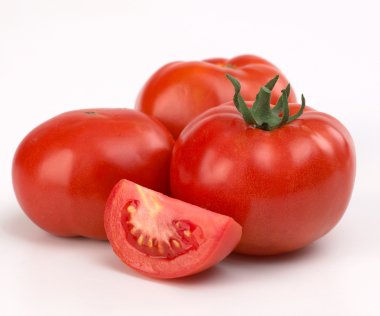
An international research team has announced that a successful sequencing of the tomato genome will lead to tastier varieties within five years.
They believe that the elusive flavor of home grown tomatoes will by then be widely available in supermarkets.
Writing in the journal Nature, the researchers say the genetic information could reduce the need for pesticides.
The authors believe the genome will also boost conventional breeding techniques over genetic modification.
While the sheer numbers and varieties of tomatoes available in UK shops have increased substantially in the past 20 years, many consumers would complain that this growth has been at the expense of flavor.
Scientists like Professor Graham Seymour at the University of Nottingham would tend to agree.
“In the early 1990s what changed the tomato industry was the use of non-ripening mutant genes, genes that came from natural mutations that have been used to extend shelf life in the fruit.
“But this has been quite a blunt instrument, because when you slow ripening down you also slow down those other processes like flavor development and color development.”

As part of an international team of more than 300 scientists from 14 countries, Prof. Graham Seymour and his colleagues believe that the successful deciphering of the tomato genome will have a major impact on a global industry worth between $30 billion and $40 billion annually.
“Now that we have the genome it will be possible to actually target the genes that control flavor separately from those that control shelf life. So it should be possible in the very near future to have tomatoes that last a long time but develop a very dark red color, are full of phyto chemicals and are much more tasty.”
Another member of the team Dr. Gerard Bishop from Imperial College London says the publication of the genome marks a “step change” in the way we breed tomatoes.
“Yield has been the big driver behind most of the breeding strategies and now the push is to go over to flavor. We now have the ability to breed varieties more quickly, it’s going to provide us with more intricate ways of precisely breeding the varieties we really want.”
And these new varieties will be on the shelves very soon according to Prof. Graham Seymour.
“I only work with a couple of companies but I know that they are putting through some of these new traits and they are going to their elite lines – but all tomato breeding companies will be taking this up now so you would expect to see a number of new products over the next 3-5 years.”
However the publication of the tomato genome will raise fears in some people that scientists will now be able to tinker more easily with the genetic makeup of the fruit.
Back in the early 1990s a genetically modified tomato called the Flavr Savr was the first GM crop licensed for human consumption. It was not a commercial success as public concerns over the technology eventually lead to its demise.
So will the availability of the full genetic sequence and the demand for tastier varieties revitalize the GM effort? Prof. Graham Seymour doesn’t think so.
“It’s very likely at the moment that it will just be better breeding through conventional techniques. The genome sequence allows us to target those gene variants in the wild species and bring them into the cultivated lines and do that relatively effectively.”
Dr. Gerard Bishop agrees that the knowledge gleaned from the genome will boost conventional breeding.
“It will allow us to breed more pesticide resistant varieties. And because some of the wild species come from desert locations, there are going to be genes we can breed in that will help mitigate climate change.”
But will the publication of the genome shed any light on the perennial debate about whether a tomato is a fruit or a vegetable? The question gets short shrift from Prof. Graham Seymour
“It’s botanically a fruit, it’s a berry, that’s it.”